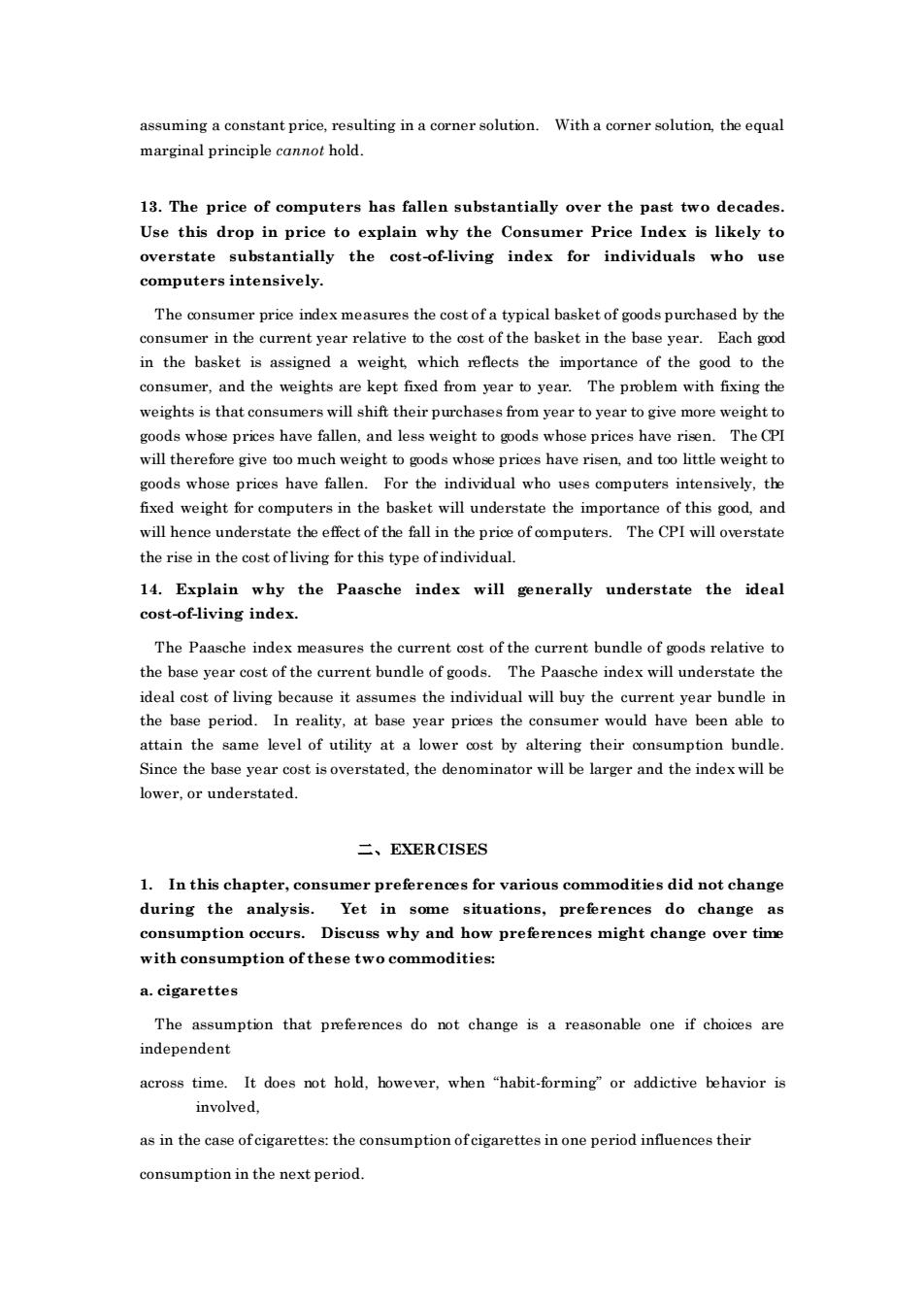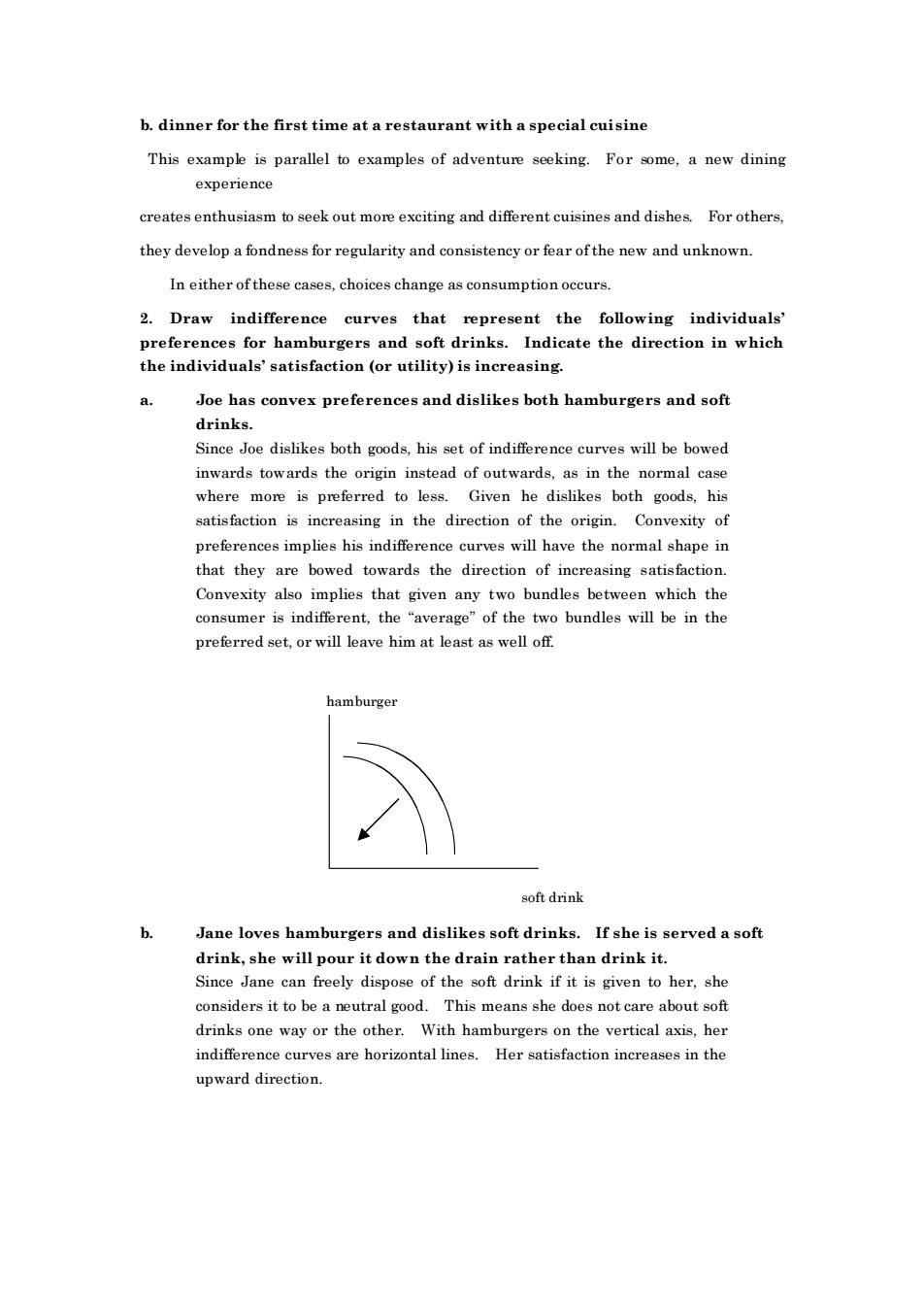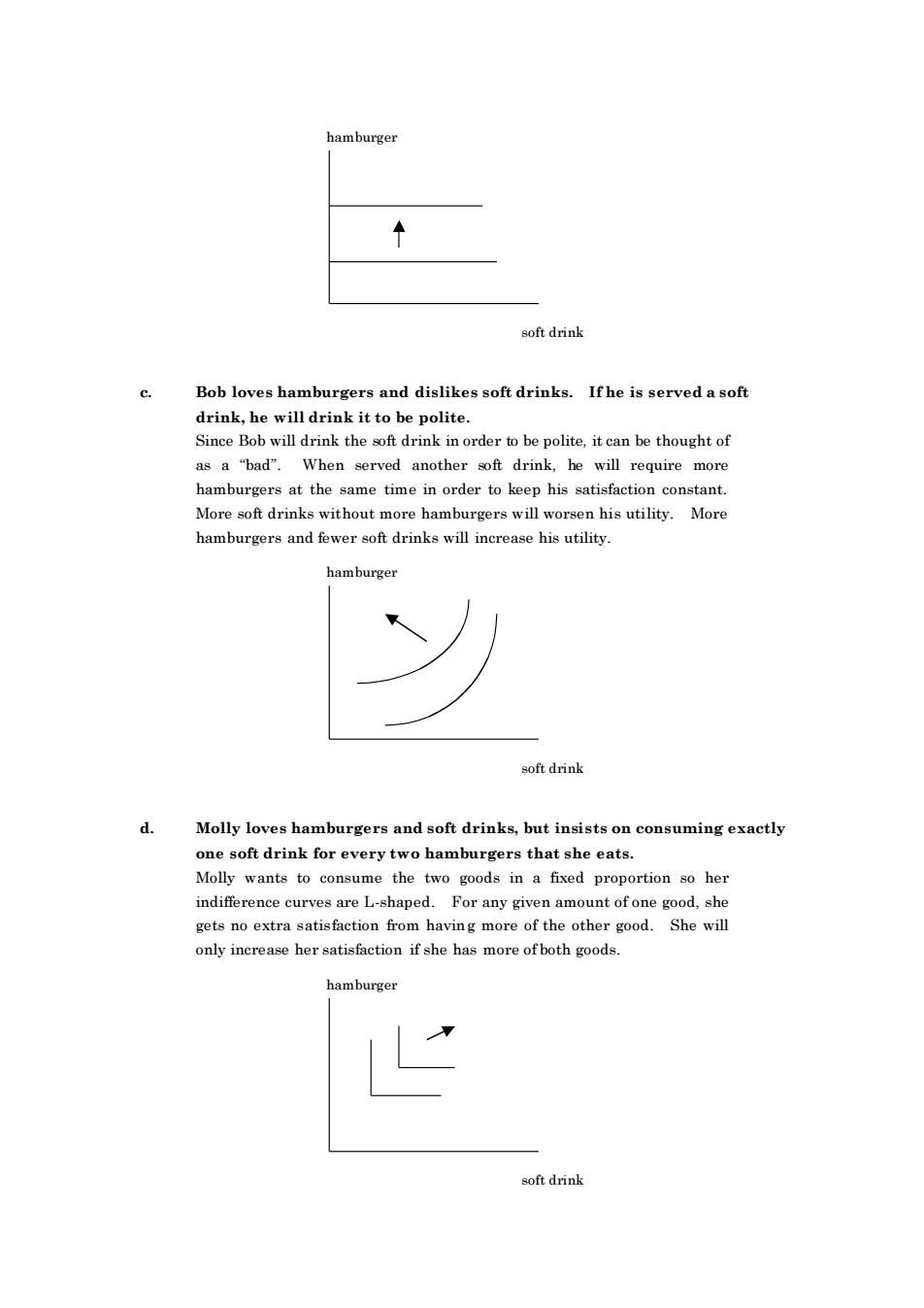
assuming a constant price,resulting in a corner solution.With a corner solution,the equal marginal principle cannot hold. 13.The price of computers has fallen substantially over the past two decades Use this drop in price to explain why the Consumer Price Index is likely to overstate substantially the cost-of-living index for individuals who use computers intensively. The consumer price index measures the cost of a typical basket of goods purchased by the omer in ofthe basket in the base year.Each good which reflects the importance the good to the consumer,and the weights are kept fixed from year to year.The problem with fixing the weights is that consumers will shift their purchases from year to year to give more weight to goods whose prices have fallen.and less weight to goods whose prices have risen.The CPl will therefore give too much weight to goods whose prices have risen,and too little weight to et will understate the importance of this good.and will hence understate the effect of the fall in the price of computers.The CPI will overstate the rise in the cost of living for this type of individual. 14.Explain why the Paasche index will generally understate the ideal cost-of living index. The Paasche index measures the current cost of the current bundle of goods relative to the base year cost of the current bundle of goods.The Pa sche i index will understate the ideal cost of living because it assumes the individual will buy the current year bundle in the base period.In reality.at base year prices the consumer would have been able to attain the same level of utility at a lower cost by altering their consumption bundle. Since the base year cost is overstated,the denominator will be larger and the index will be lower,or understated. 二、EXERCISES 1.In this chapter,consumer preferences for various commodities did not change during the analysis. Yet in some situations,preferences do change as consumption occurs.Discuss why and how preferences might change over time with consumption ofthese two commodities: a.cigarettes The assumption that preferences do not change is a reasonable one if choices are independent across time.It does not hold,however,when"habit-forming"or addictive behavior is involved, as in the case ofcigarettes:the consumption ofcigarettes in one period influences their consumption in the next period
assuming a constant price, resulting in a corner solution. With a corner solution, the equal marginal principle cannot hold. 13. The price of computers has fallen substantially over the past two decades. Use this drop in price to explain why the Consumer Price Index is likely to overstate substantially the cost-of-living index for individuals who use computers intensively. The consumer price index measures the cost of a typical basket of goods purchased by the consumer in the current year relative to the cost of the basket in the base year. Each good in the basket is assigned a weight, which reflects the importance of the good to the consumer, and the weights are kept fixed from year to year. The problem with fixing the weights is that consumers will shift their purchases from year to year to give more weight to goods whose prices have fallen, and less weight to goods whose prices have risen. The CPI will therefore give too much weight to goods whose prices have risen, and too little weight to goods whose prices have fallen. For the individual who uses computers intensively, the fixed weight for computers in the basket will understate the importance of this good, and will hence understate the effect of the fall in the price of computers. The CPI will overstate the rise in the cost of living for this type of individual. 14. Explain why the Paasche index will generally understate the ideal cost-of-living index. The Paasche index measures the current cost of the current bundle of goods relative to the base year cost of the current bundle of goods. The Paasche index will understate the ideal cost of living because it assumes the individual will buy the current year bundle in the base period. In reality, at base year prices the consumer would have been able to attain the same level of utility at a lower cost by altering their consumption bundle. Since the base year cost is overstated, the denominator will be larger and the index will be lower, or understated. 二、EXERCISES 1. In this chapter, consumer preferences for various commodities did not change during the analysis. Yet in some situations, preferences do change as consumption occurs. Discuss why and how preferences might change over time with consumption of these two commodities: a. cigarettes The assumption that preferences do not change is a reasonable one if choices are independent across time. It does not hold, however, when “habit-forming” or addictive behavior is involved, as in the case of cigarettes: the consumption of cigarettes in one period influences their consumption in the next period

b.dinner for the first time at a restaurant with a special cuisine This example is parallel to examples of adventure seeking.For some,a new dining experience creates enthusiasm to seek out more exciting and different cuisines and dishes For others they develop a fondness for regularity and consistency or fear of the new and unknown. In either of these cases,choices change as consumption occurs. 2.Draw indifference curves that represent the following individuals preferences for hamburgers and soft drinks.Indicate the direction in which the individuals'satisfaction (or utility)is increasing. a. Joe has convex preferences and dislikes both hamburgers and soft drinks Since Joe dislikes both goods,his set of indifference curves will be bowed inwards towards the origin insteado outwards,as in the normal cas where more is preferred to less.Given he dislikes both goods,hi satisfaction is increasing in the direction of the origin.Convexity of preferences implies his indifference curves will have the normal shape in that they are bowed towards the direction of increasing satisfaction. Convexityals implies tha t given any two bundles between which the consumer is indifferent,the "average"of the two bundles will be in the preferred set,or will leave him at least as well off. hamburger soft drink Jane loves hamburgers and dislikes soft drinks.If she is served a soft drink,she will pour it down the drain rather than drink it. Since Jane of the soft drink if it is given to her,she considersit to bea neutral good This means she does not care about sof drinks one way or the other.With hamburgers on the vertical axis,her indifference curves are horizontal lines.Her satisfaction increases in the upward direction
b. dinner for the first time at a restaurant with a special cuisine This example is parallel to examples of adventure seeking. For some, a new dining experience creates enthusiasm to seek out more exciting and different cuisines and dishes. For others, they develop a fondness for regularity and consistency or fear of the new and unknown. In either of these cases, choices change as consumption occurs. 2. Draw indifference curves that represent the following individuals’ preferences for hamburgers and soft drinks. Indicate the direction in which the individuals’ satisfaction (or utility) is increasing. a. Joe has convex preferences and dislikes both hamburgers and soft drinks. Since Joe dislikes both goods, his set of indifference curves will be bowed inwards towards the origin instead of outwards, as in the normal case where more is preferred to less. Given he dislikes both goods, his satisfaction is increasing in the direction of the origin. Convexity of preferences implies his indifference curves will have the normal shape in that they are bowed towards the direction of increasing satisfaction. Convexity also implies that given any two bundles between which the consumer is indifferent, the “average” of the two bundles will be in the preferred set, or will leave him at least as well off. hamburger soft drink b. Jane loves hamburgers and dislikes soft drinks. If she is served a soft drink, she will pour it down the drain rather than drink it. Since Jane can freely dispose of the soft drink if it is given to her, she considers it to be a neutral good. This means she does not care about soft drinks one way or the other. With hamburgers on the vertical axis, her indifference curves are horizontal lines. Her satisfaction increases in the upward direction

↑ soft drink Bob loves hamburgers and dislikes soft drinks.If he is served a soft Since Bol as a "bad".When served another soft drink,he will require more hamburgers at the same time in order to keep his satisfaction constant. More soft drinks without more hamburgers will worsen his utility.More hamburgers and fewer soft drinks will increase his utility. eoftdrink Molly loves hamburgers and soft drinks,but insists on consuming exactly one soft drink for every two hamburgers that she eats. Molly wants to consume the two goods in a fixed proportion so her indifference curves are l-shaped.For any given amount of one good.she gets no extra satisfaction from having more of the other good.She will e her satisfaction if she ha more of both goods
hamburger soft drink c. Bob loves hamburgers and dislikes soft drinks. If he is served a soft drink, he will drink it to be polite. Since Bob will drink the soft drink in order to be polite, it can be thought of as a “bad”. When served another soft drink, he will require more hamburgers at the same time in order to keep his satisfaction constant. More soft drinks without more hamburgers will worsen his utility. More hamburgers and fewer soft drinks will increase his utility. hamburger soft drink d. Molly loves hamburgers and soft drinks, but insists on consuming exactly one soft drink for every two hamburgers that she eats. Molly wants to consume the two goods in a fixed proportion so her indifference curves are L-shaped. For any given amount of one good, she gets no extra satisfaction from having more of the other good. She will only increase her satisfaction if she has more of both goods. hamburger soft drink